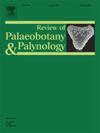Did ash (Fraxinus) become extinct on Cyprus?
IF 1.7
3区 地球科学
Q2 PALEONTOLOGY
引用次数: 0
Abstract
Fraxinus L., ash, is a genus of plants in the olive family (OLEACEAE) with a large distribution in Europe, Asia, and North America. The three ash species attested today in Cyprus (F. angustifolia Vahl, F. excelsior L., F. ornus L.) are modern introductions dated to the 19th and 20th centuries CE. However, remains of wood charcoal (anthracological) fragments recovered from archaeological sites in Cyprus suggest the presence of Fraxinus in the local flora during the Early Holocene. This article reviews the available data on the presence of ash (Fraxinus spp.) in Cyprus and shows evidence for its exploitation at the Early Aceramic Neolithic site of Parekklishia-Shillourokambos (8600–6900 cal BCE) and the Late Aceramic Neolithic site of Khirokitia (Choirokoitia)-Vounoi (6800–5500 cal BCE). This data demonstrates that Fraxinus was present in Cyprus during the Early Holocene and therefore contributes to our understanding of its past biogeography as well as to the vegetation history and palaeoecology of Cyprus, and the environment around the sites.
求助全文
约1分钟内获得全文
求助全文
来源期刊
CiteScore
3.50
自引率
21.10%
发文量
149
审稿时长
6 months
期刊介绍:
The Review of Palaeobotany and Palynology is an international journal for articles in all fields of palaeobotany and palynology dealing with all groups, ranging from marine palynomorphs to higher land plants. Original contributions and comprehensive review papers should appeal to an international audience. Typical topics include but are not restricted to systematics, evolution, palaeobiology, palaeoecology, biostratigraphy, biochronology, palaeoclimatology, paleogeography, taphonomy, palaeoenvironmental reconstructions, vegetation history, and practical applications of palaeobotany and palynology, e.g. in coal and petroleum geology and archaeology. The journal especially encourages the publication of articles in which palaeobotany and palynology are applied for solving fundamental geological and biological problems as well as innovative and interdisciplinary approaches.

 求助内容:
求助内容: 应助结果提醒方式:
应助结果提醒方式:


